|
Kindergarten painted to music and learned about Kandinsky! Read my past post for details.
This is a continuation of Cassie Stephens unit on lines. So we started off class looking at some snake lines that I had made. Each snake was a different kind of line and we practiced saying their names. As we called out the name of the line, we made that particular line with our arms. I couldn't help but giggle at 20+ kindergartners chanting out "vertical (with their arms straight in the air), horizontal, angle..." After that, we learned a poem about Larry the Line (he's a stuffed snake). After reciting the poem a few times, we got to meet Larry the Line (a toy stuffed snake). Larry's FAVORITEEEE thing to do in the WHOLE WIDE WORLD is to make lines. So as Larry made lines with his body, students who could tell me the name of the line got to come up and pet him. Next, I challenged them to paint the same lines that I could paint. Typically, I'm not one for doing guided lessons, but I wanted to see what the students were capable of painting. By the end of class, I had tons of beautifully painted black lines. We set the paintings on the back burner for a couple classes and then came back to them. We watched a funny music video about ROY G BIV that the kids LOVED! ROY G BIV is the acronym to remember the order of the colors for the rainbow. Then we watched another quick video of a lady reading a book about rainbows. Then we got to paint again! The students were given back their guided line paintings. They were shown how to paint a rainbow between the lines of their painting and then were asked to do the same. The paintings turned out lovely! This year, I added another step to the project. The final day we cut our rainbow paintings into a monster body. They had a variety of different body shapes that they could trace or they could create their own. Then they used black and white paper to cut out eyes, noses, mouths, teeth, horns, and whatever other details they wanted to add!
Sorry I only got a couple pictures of this project! Students learned about Kandinsky and then practiced painting lines to music. Afterwards, they filled in the background with color. Lastly, the used an itty bitty brush to add patterns.
You can read more of the details from last year's write up which can be found here! Mr. Pollock was a painter who lived from 1912 to 1956, ultimately dying in a car crash at the young age of 44. As most of you probably know, Jackson was famous for his "drip paintings." Oftentimes, people exclaim "Well I could've done that!" But the reason Mr. Pollock is famous is because he was a pioneer of the method during a time when people were dabbling more and more into abstract art. He was known for splattering, spraying, squirting, dripping, and pouring paint onto his canvas. He used all sorts of materials to do this such as brushes, sticks, spatulas, spoons, etc. He worked with his canvas on the floor so that he could "dance" around it as he worked. So I'm pretty sure that I have a few more grey hairs after this project than when I started it! We started off by talking about Mr. Pollock and his different ways that he made art. Then I introduced them to string painting. Each table had a different color and they were encouraged to string paint with as many colors as they wanted to. For the second day of project, every two tables were given three boxes with an artwork in the bottom and marbles in it. The students didn't know whose artwork was in their box. I walked around and put a squirt of paint in each box. The students then had 40 seconds to roll the marbles around through the paint. After 40 seconds, they were asked to pass their box to the next person and I put a new color in it. Then we repeated the process again. We did this over and over until each painting had several different colors marble painted on to it. For the final day of the project, we reviewed our lines and shapes. I was so impressed with how well they remembered their lines after not having talked about them for so long! They were given black paint to paint different lines and shapes onto their artwork. Using the black paint as the final step was inspired by Deep Space Sparkle's Pollock project. We also reviewed how to use a paint brush correctly. Overall, I love how expressive the works turned out and how stark the black lines and shapes are against their backgrounds.
I thought Piet Mondrian would be a good introduction into shape while also still dealing a bit with color and lines. It also just so happens that Mr. Mondrian is my FAVORITE artist! Mondrian was a Dutch painter who lived from 1872 to 1944. He was a leader of the artistic movement 'de stijl.' "Mondrian, and the artists of De Stijl, advocated pure abstraction and a pared down palette in order to express a utopian ideal of universal harmony in all of the arts. (www.theartstory.org)" Mr. Mondrian is known for only using the primary colors (red, yellow, and blue). He also only used straight vertical and horizontal lines which created squares and rectangles. No diagonals! These were the focus of our lessons. We began class by watching OK GO's music video The Primary Colors. Then we watched Broadway Boogie-Woogie (named after and inspired by one of Mondrian's paintings). The kids loved the Boogie-Woogie video! And if they were super quick cleaners at the end of class, we watched it a second time. We also looked at some of my artwork which is largely influenced by Mondrian. It was fun to listen to them compare and contrast Mondrian and I. Throughout the lesson I stressed the primary colors (red, yellow, and blue) and how they were the building blocks to all the other colors. You cannot mix any two colors together to make a primary color. You have to go to Walmart or another store to buy them! The kids caught on pretty quickly to the primary colors.
Then we turned our attention to vertical and horizontal lines. Since we have been learning so much about lines, my kinders were masters of knowing the difference between vertical and horizontal. To start the project, we re-touched on how lines have to hold their hands to create a shape. For this project, the shapes we would be making were squares and rectangles. Students practiced their scissor-skills by cutting out squares and rectangles out of primary colored papers. Our scissors were SOOOOO hungry after not eating any paper all summer! The kids were asked to fill most of their page with color, but it was fine if they had a little bit of white showing. They really got into this project and cutting out squares and rectangles carried over into a second day of the project. After they had finished gluing down all their shapes, they were then asked to dip a piece of cardboard in black paint and print vertical and horizontal lines. I LOVE how well these turned out Another continuation of Cassie Stephens' unit on lines. For this class, we of course had to talk more about lines! We once again practiced making lines with our bodies and with Larry the Line. The kids were really starting to catch onto the names of lines by now. We took a look at some artwork by Wassily Kandsinky. Mr. Kandinsky was a Russian painter who was one of the first people to ever paint abstractly/non-representationally. He was largely influenced by music due to his synesthesia. Synesthesia is a condition in which one of your senses becomes activated due to the stimulation of another sense. So when Kandinsky heard music, he would oftentimes see colors and vice versa. While looking at his work, we tried to see if we could find some of the lines that we had been talking about. After that, because they had shown expertise in the previous class during my guided line drawing, they were allowed to paint whatever kinds of lines they wanted to! Like Kandinsky, we painted to music. The kids were asked to fill their papers with black lines. After the paper had been filled with black lines, they could then paint colors between their lines. While they worked, we listened to "Peter and the Wolf" by Sergei Prokofiev. This selection of music uses a different instrument for each character and allows for the students to interpret the sounds differently.
This year, I added one more layer to the painting. After using tempera cakes to paint to music, the next class we used tempera to add patterns. We talked about creating patterns using lines, colors, shapes, numbers, letters, or a combination of all of them! Although most of my other grades will be doing new projects this year, I am keeping kindergarten largely the same. I was SUPER impressed with where they were at by the end of last year so I want to repeat what was so successful. Like last year, we are working really hard on learning about lines.
This is a continuation of Cassie Stephens unit on lines. So we started off class looking at some snake lines that I had made. Each snake was a different kind of line and we practiced saying their names. As we called out the name of the line, we made that particular line with our arms. I couldn't help but giggle at 20+ kindergartners chanting out "vertical (with their arms straight in the air), horizontal, angle..." After that, we learned a poem about Larry the Line (he's a stuffed snake). After reciting the poem a few times, we got to meet Larry the Line (a toy stuffed snake). Larry's FAVORITEEEE thing to do in the WHOLE WIDE WORLD is to make lines. So as Larry made lines with his body, students who could tell me the name of the line got to come up and pet him. Next, I challenged them to paint the same lines that I could paint. Typically, I'm not one for doing guided lessons, but I wanted to see what the students were capable of painting. By the end of class, I had tons of beautifully painted black lines. We set the paintings on the back burner for a couple classes and then came back to them. We watched a funny music video about ROY G BIV that the kids LOVED! ROY G BIV is the acronym to remember the order of the colors for the rainbow. Then we watched another quick video of a lady reading a book about rainbows. Then we got to paint again! The students were given back their guided line paintings. They were shown how to paint a rainbow between the lines of their painting and then were asked to do the same. The paintings turned out lovely! Mr. Pollock was a painter who lived from 1912 to 1956, ultimately dying in a car crash at the young age of 44. As most of you probably know, Jackson was famous for his "drip paintings." Oftentimes, people exclaim "Well I could've done that!" But the reason Mr. Pollock is famous is because he was a pioneer of the method during a time when people were dabbling more and more into abstract art. He was known for splattering, spraying, squirting, dripping, and pouring paint onto his canvas. He used all sorts of materials to do this such as brushes, sticks, spatulas, spoons, etc. He worked with his canvas on the floor so that he could "dance" around it as he worked. So I'm pretty sure that I have a few more grey hairs after this project than when I started it! We started off by talking about Mr. Pollock and his different ways that he made art. Then I introduced them to string painting. Each table had a different color and they were encouraged to string paint with as many colors as they wanted to. For the second day of project, every two tables were given three boxes with an artwork in the bottom and marbles in it. The students didn't know whose artwork was in their box. I walked around and put a squirt of paint in each box. The students then had 40 seconds to roll the marbles around through the paint. After 40 seconds, they were asked to pass their box to the next person and I put a new color in it. Then we repeated the process again. We did this over and over until each painting had several different colors marble painted on to it. For the final day of the project, we reviewed our lines and shapes. I was so impressed with how well they remembered their lines after not having talked about them for so long! They were given black paint to paint different lines and shapes onto their artwork. Using the black paint as the final step was inspired by Deep Space Sparkle's Pollock project. We also reviewed how to use a paint brush correctly. Overall, I love how expressive the works turned out and how stark the black lines and shapes are against their backgrounds.
Like the first and second graders, the kinders also learned about Piet Mondrian so if you read my post about the first or second grade Mondrian projects, some of this might sound familiar.
I thought Mondrian would be a good introduction into shape while also still dealing a bit with color and lines. It also just so happens that Mr. Mondrian is my FAVORITE artist! Mondrian was a Dutch painter who lived from 1872 to 1944. He was a leader of the artistic movement 'de stijl.' "Mondrian, and the artists of De Stijl, advocated pure abstraction and a pared down palette in order to express a utopian ideal of universal harmony in all of the arts. (www.theartstory.org)" Mr. Mondrian is known for only using the primary colors (red, yellow, and blue). He also only used straight vertical and horizontal lines which created squares and rectangles. No diagonals! These were the focus of our lessons. We began class by watching OK GO's music video The Primary Colors. Then we watched Broadway Boogie-Woogie (named after and inspired by one of Mondrian's paintings). The kids loved the Boogie-Woogie video! And if they were super quick cleaners at the end of class, we watched it a second time. Throughout the lesson I stressed the primary colors (red, yellow, and blue) and how they were the building blocks to all the other colors. You cannot mix any two colors together to make a primary color. You have to go to Walmart or another store to buy them! The kids caught on pretty quickly to the primary colors. Then we turned our attention to vertical and horizontal lines. Since we have been learning so much about lines, my kinders were masters of knowing the difference between vertical and horizontal. To start the project, we re-touched on how lines have to hold their hands to create a shape. For this project, the shapes we would be making were squares and rectangles. Students practiced their scissor-skills by cutting out squares and rectangles out of primary colored papers. Our scissors were SOOOOO hungry after not eating any paper all summer! The kids were asked to fill most of their page with color, but it was fine if they had a little bit of white showing. They really got into this project and cutting out squares and rectangles carried over into a second day of the project. After they had finished gluing down all their shapes, they were then asked to dip a piece of cardboard in black paint and print vertical and horizontal lines. I LOVE how well these turned out! |
Devon CalvertHarmony and Consolidated Elementary Art Teacher in Milton, WI. UW-Eau Claire graduate. WAEA President. Apple Teacher. Archives
March 2019
Categories
All
|
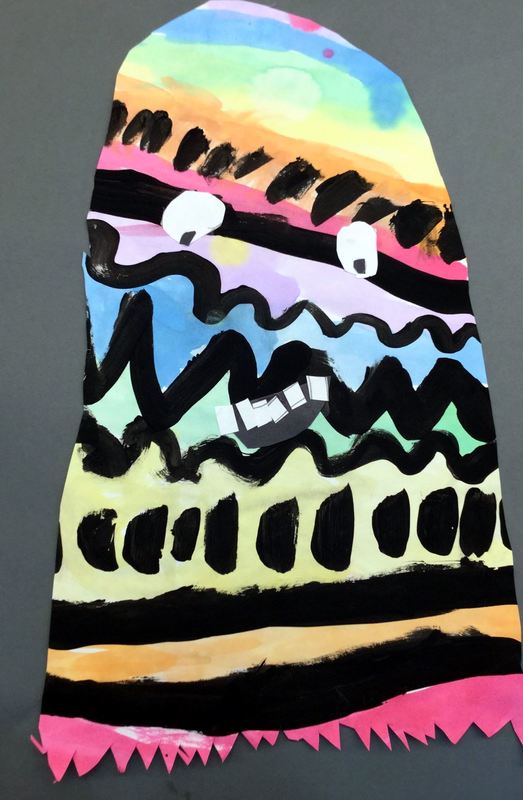


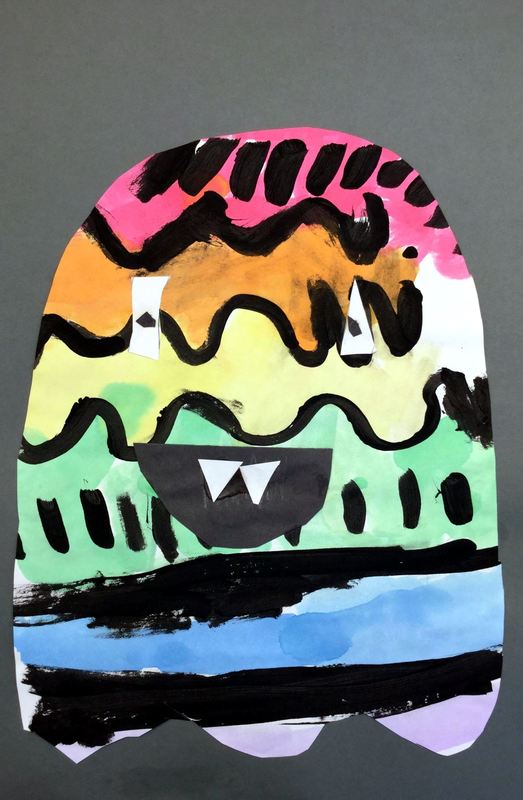


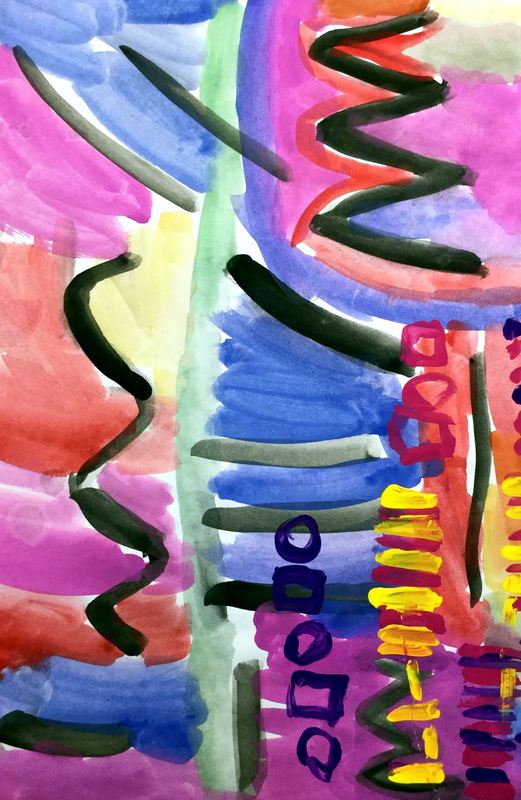





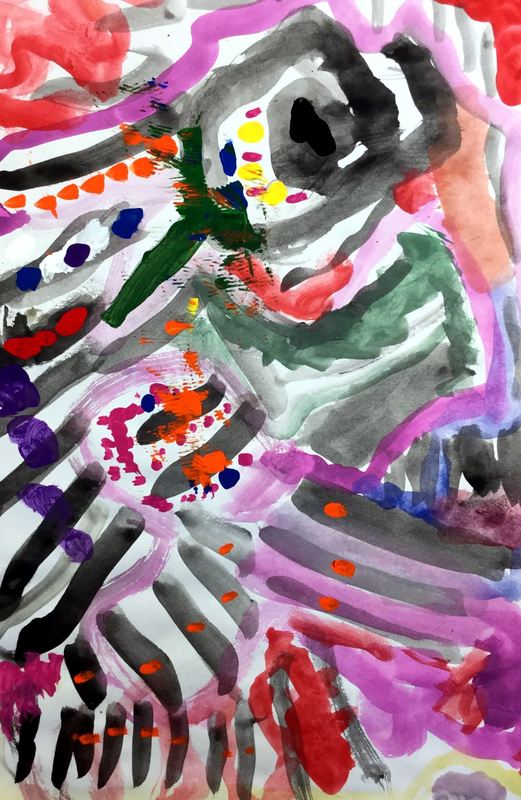




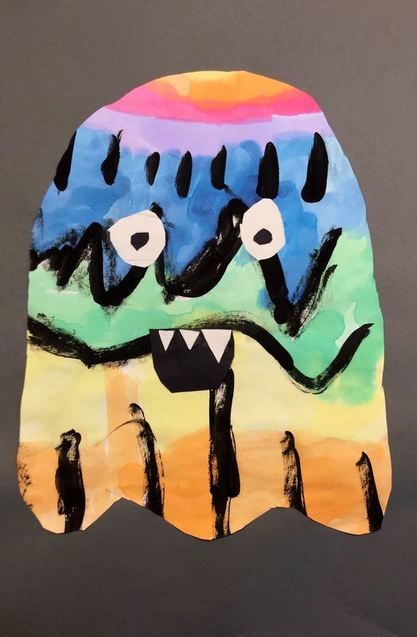











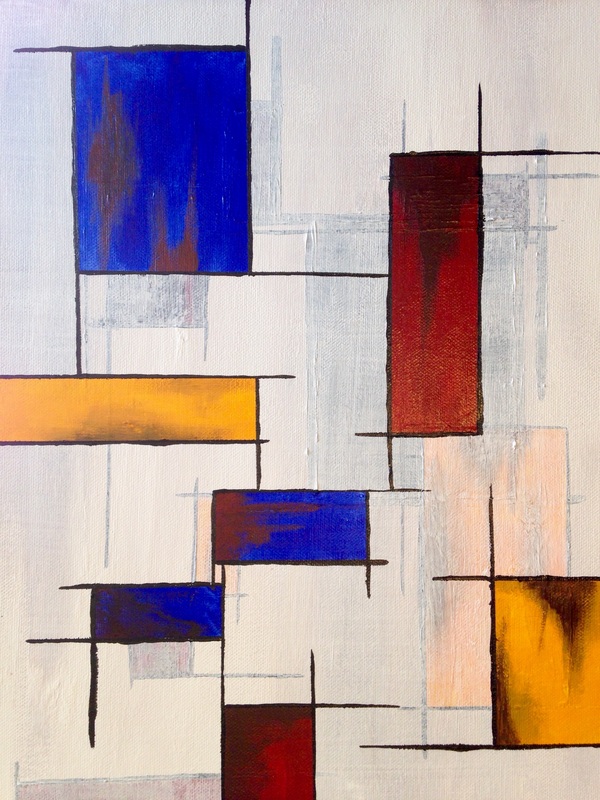










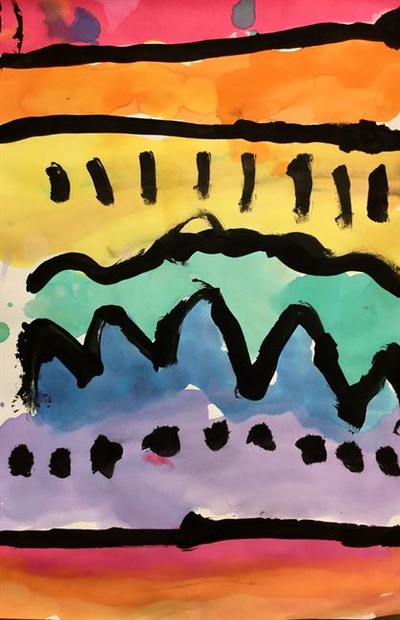
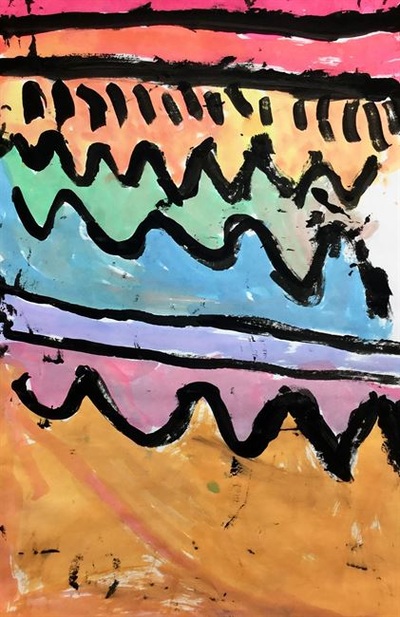

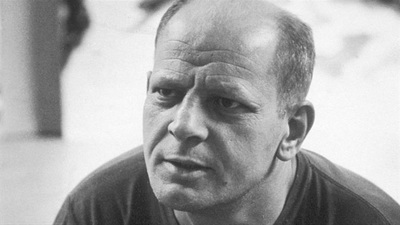






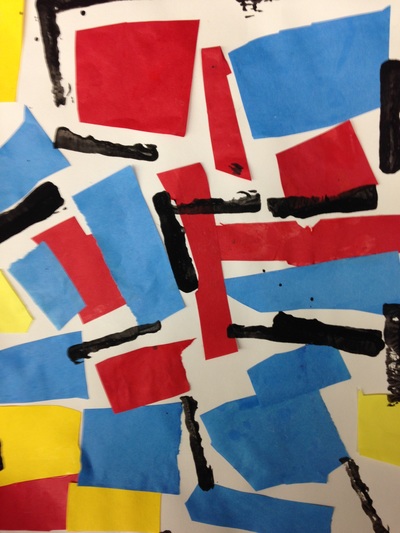


 RSS Feed
RSS Feed
